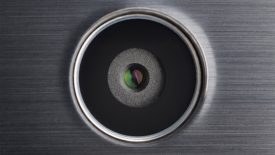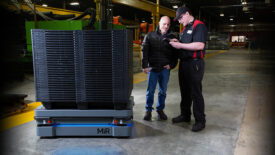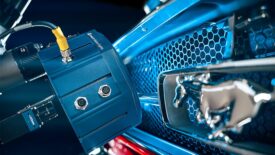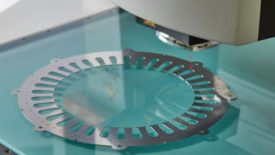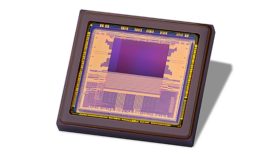Vision & Sensors
Vision & Sensors | Vision & Sensors 101
The push towards miniaturization is reshaping numerous industries, influencing design decisions and fostering innovation.
Read More
Vision & Sensors | Machine Vision 101
Part 1: AI and Machine Vision Lenses: Enhancements, Trends, and Evolution
The importance of quality image acquisition cannot be stressed enough.
November 14, 2023
Machine Vision Systems
Machine Vision for Battery Production 4.0
Machine vision has increasingly established itself as an indispensable technology for companies in a wide range of industries.
November 13, 2023
Vision & Sensors | Robotics
What You Need to Know About Robot Safety Standards
A Q&A with A3’s Carole Franklin
November 13, 2023
Vision & Sensors | Trends
Machine Learning and Artificial Intelligence Tools: The Benefits, How They Work, and Avoiding Common Pitfalls
Dive into the world of artificial intelligence (AI) and machine learning and learn how to deploy and maintain this evolving technology.
November 7, 2023
Vision & Sensors | Vision
How Robotics Applications Benefit from Machine Vision Lighting Advances
Innovations in illumination create new opportunities in automotive manufacturing, food processing, and warehousing.
November 6, 2023
Measurement
Why More Manufacturers Should Consider Implementing a Vision Measurement System
Technology advancements, emerging industries, and congressional legislation point to an exciting future for vision measurement systems.
October 18, 2023
Vision & Sensors | Machine Vision 101
Automation - Quality Practices Can Determine Next Step
Those quality practices can determine if your next step will be a rock or an alligator.
September 10, 2023
Vision & Sensors | Machine Vision 101
Smart Manufacturing Approaches to Automation
The ultimate goal for digital transformation is improved quality.
September 7, 2023
Vision & Sensors | Sensors
Unleashing Potential: How Advances in 3D Vision Sensors are Transforming Manufacturing and Logistics
Manufacturers can rely on sophisticated sensors to revolutionize the way they do business, enabling enhanced quality control, improved efficiency, and increased safety.
September 4, 2023
Stay in the know with Quality’s comprehensive coverage of
the manufacturing and metrology industries.
eNewsletter | Website | eMagazine
JOIN TODAY!Copyright ©2025. All Rights Reserved BNP Media.
Design, CMS, Hosting & Web Development :: ePublishing
